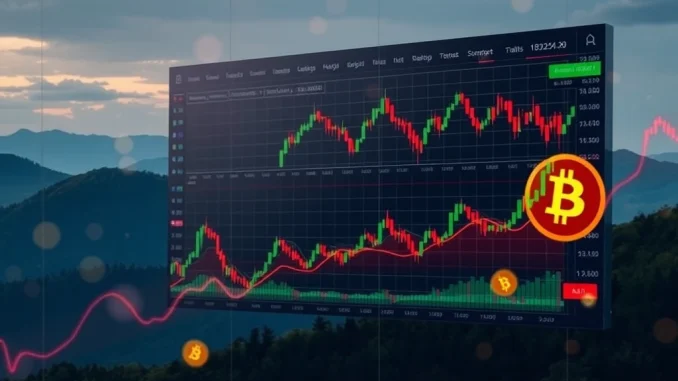
Understanding market sentiment is a crucial element in successful Bitcoin trading. While price charts show historical data, metrics like the long-short ratio offer a glimpse into the current positioning of traders in the derivatives market. Specifically, looking at BTC perpetual futures can provide valuable insights into whether participants are leaning towards bullish (long) or bearish (short) bets.
What Does the Long-Short Ratio Reveal?
The long-short ratio is a straightforward metric. It compares the total number of long positions to the total number of short positions open on an exchange or across multiple exchanges. A ratio above 1 indicates that there are more long positions than short positions, suggesting a generally bullish bias among futures traders. Conversely, a ratio below 1 means more short positions are open, pointing to a bearish sentiment.
- Ratio > 1: More longs than shorts (Generally Bullish)
- Ratio < 1: More shorts than longs (Generally Bearish)
- Ratio ≈ 1: Positions are relatively balanced
Latest BTC Perpetual Futures Data: A Snapshot
Let’s look at the 24-hour long-short ratio data for BTC perpetual futures across some major cryptocurrency exchanges. This snapshot provides a recent view of trader positioning.
| Exchange/Total | Long Percentage | Short Percentage |
|---|---|---|
| Total (Across Featured Exchanges) | 51.07% | 48.93% |
| Binance | 52.10% | 47.90% |
| Bybit | 50.01% | 49.99% |
| Gate.io | 50.52% | 49.48% |
Analyzing the Current Market Sentiment
Based on the aggregated data, the overall market sentiment among traders in BTC perpetual futures over the past 24 hours shows a slight leaning towards long positions (51.07% Long vs 48.93% Short). This indicates a marginally bullish bias, meaning slightly more capital is currently positioned to profit from a price increase than a decrease on these platforms.
Looking at individual exchanges:
- Binance shows the strongest bullish tilt among the listed exchanges, with longs significantly outweighing shorts.
- Bybit is nearly perfectly balanced, indicating indecision or equal conviction on both sides.
- Gate.io also shows a slight preference for long positions, though less pronounced than Binance.
How Crypto Futures Traders Utilize This Information
For those involved in crypto futures trading, the long-short ratio is one of several tools used to gauge the market. Traders might use this data in various ways:
- Confirmation: If the ratio aligns with their existing technical or fundamental analysis, it can add conviction to a trade idea.
- Contrarian Indicator: Some traders view extreme ratios as potential reversal signals. For example, an excessively high long percentage might suggest the market is overextended and due for a pullback as longs get liquidated.
- Risk Management: Understanding the crowd’s positioning can inform risk assessment.
It’s important to remember that the long-short ratio is just one data point. It reflects the positions taken, not necessarily where the price is heading. High leverage positions can skew the ratio, and large players can manipulate sentiment.
Enhancing Your Bitcoin Trading Strategy
Integrating the long-short ratio into your broader Bitcoin trading strategy requires context. Combine it with other indicators like funding rates, open interest, volume analysis, and traditional technical analysis. For instance, if the long-short ratio is slightly bullish but price action is weak and funding rates are high, it might signal a potential short squeeze or a divergence in sentiment vs. price momentum.
Challenges and Considerations
While insightful, relying solely on the long-short ratio for BTC perpetual futures can be misleading. Data sources may vary, not all exchanges are included, and the ratio doesn’t differentiate between retail and institutional traders or their leverage levels. Always use this data as part of a comprehensive analysis framework.
Conclusion: What the Ratios Suggest Now
The recent 24-hour data for BTC perpetual futures indicates a slightly bullish sentiment among traders across major platforms. While the overall long-short ratio is just above 1, suggesting a modest preference for long positions, the picture varies by exchange. This information, when combined with other market data, can offer valuable insights for navigating the dynamic world of crypto futures and refining your Bitcoin trading decisions. Stay informed and trade wisely.



